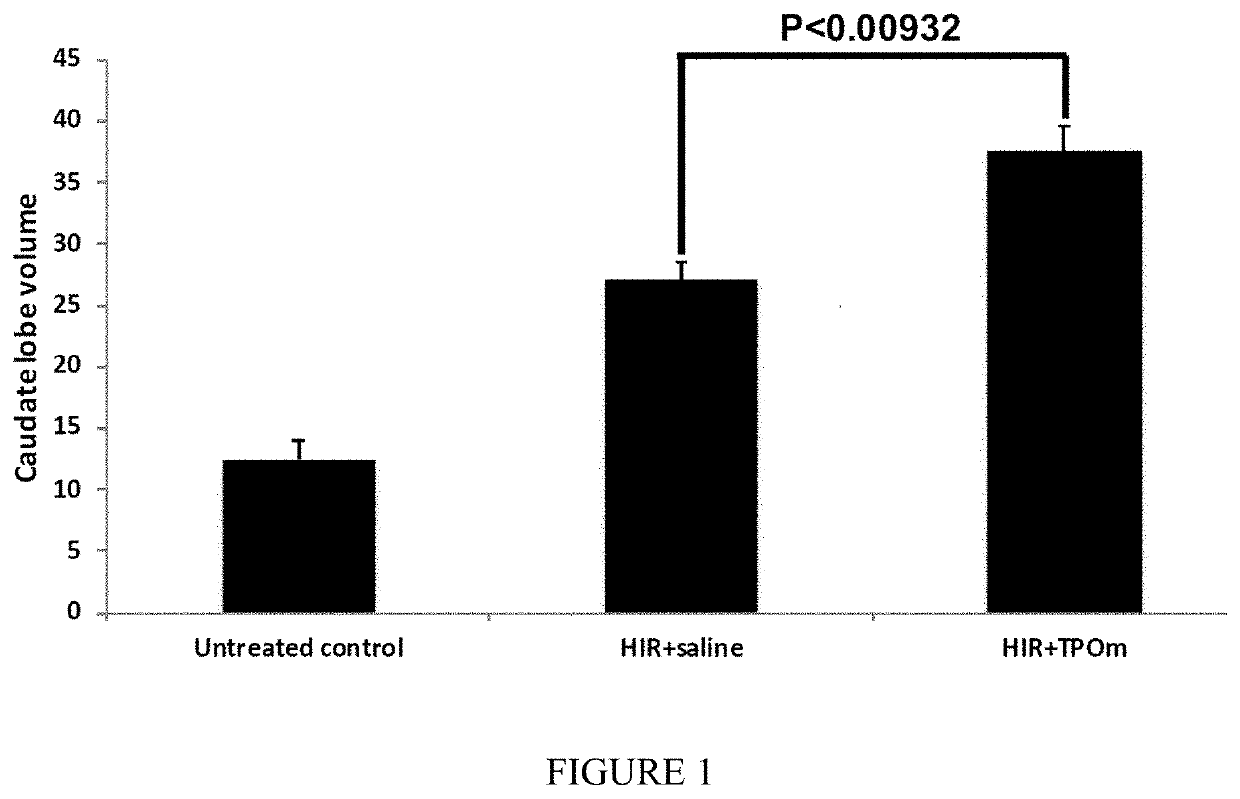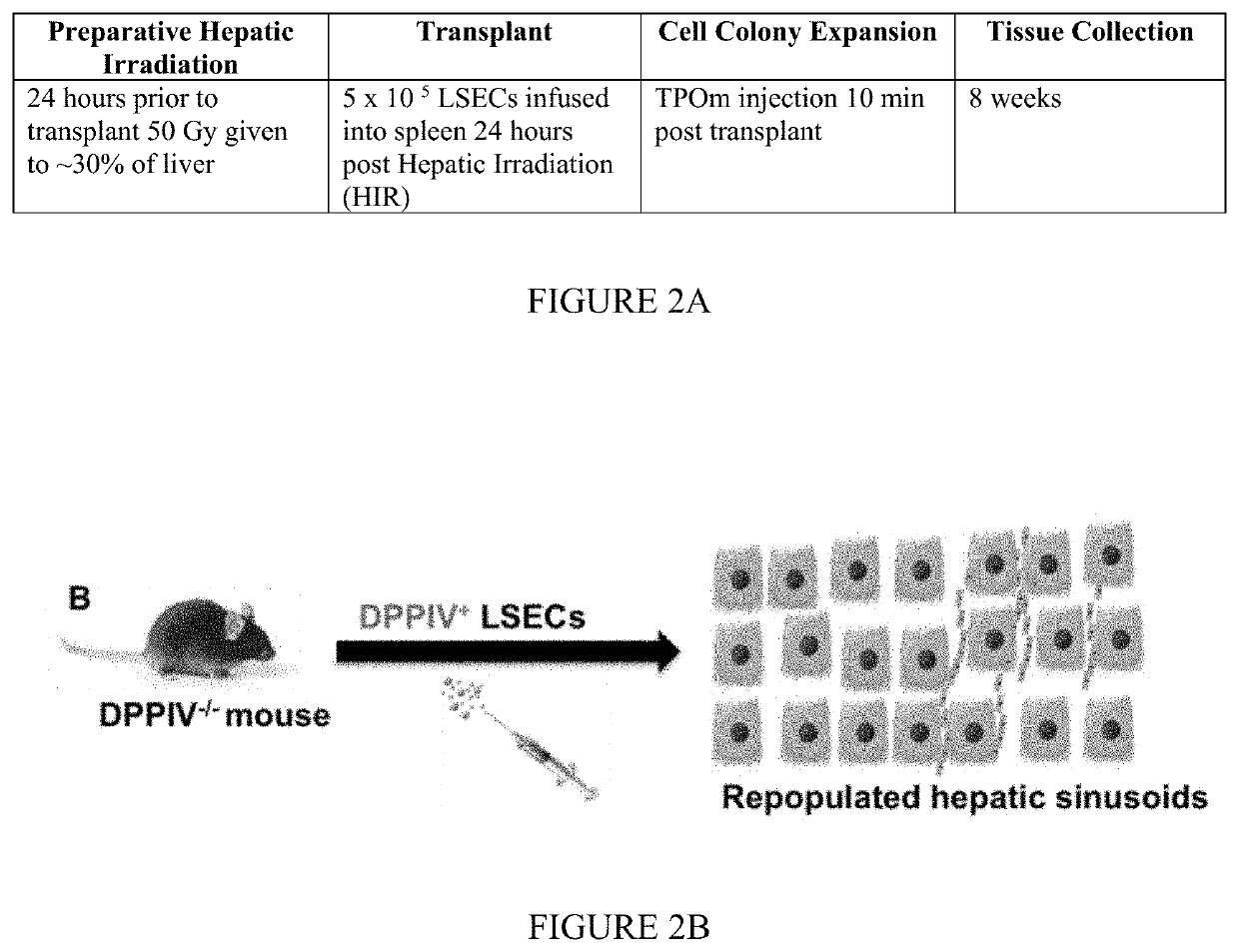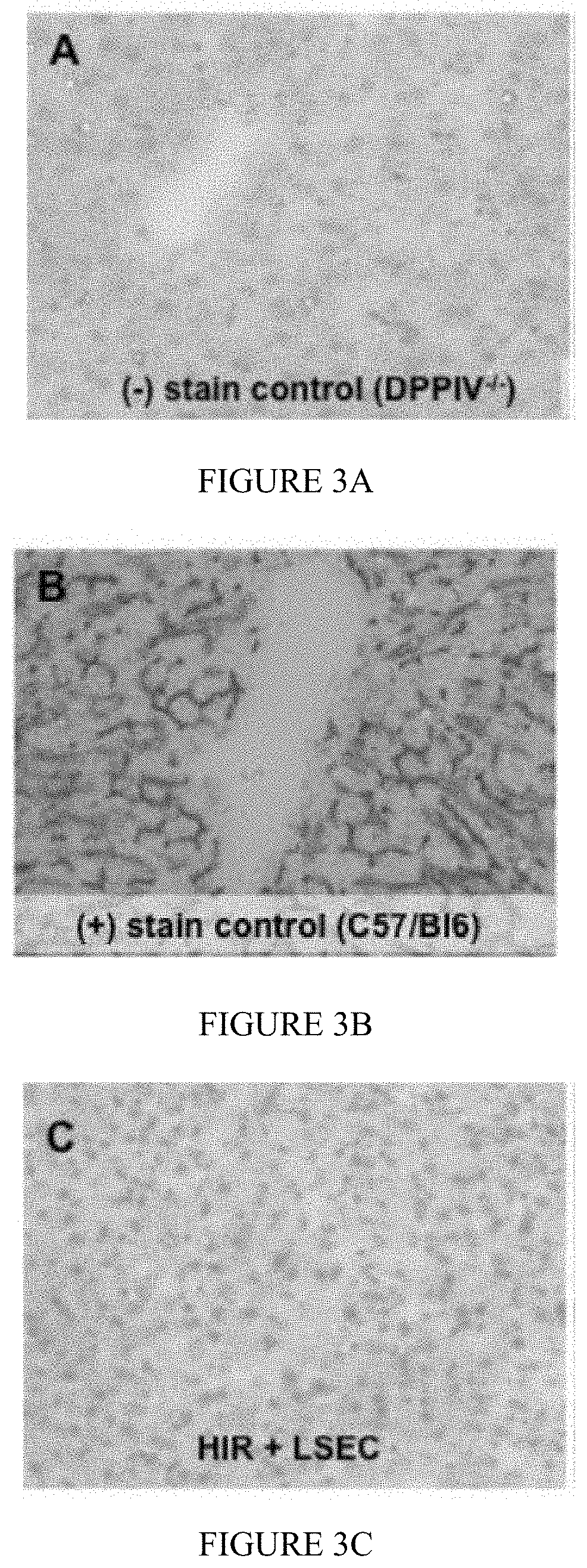Methods for mitigating liver injury and promoting liver hypertrophy, regeneration and cell engraftment in conjunction with radiation and/or radiomimetic treatments
- Summary
- Abstract
- Description
- Claims
- Application Information
AI Technical Summary
Benefits of technology
Problems solved by technology
Method used
Image
Examples
example 1
TPOm on Non-Irradiated Lobe
[0729]Materials and Methods
[0730]Animals:
[0731]8-12-week-old C57BL6 male mice were housed in the Institute for Animal Studies at Albert Einstein College of Medicine and fed regular chow. Animals were weighed in the beginning of the experiment and before tissue collection. All experiments were performed to according to protocols approved by Institutional Animal Care and Use Committee at Albert Einstein College of Medicine.
[0732]Hepatic Irradiation:
[0733]Image-guided external beam irradiation was performed using a small animal radiation research platform (SARRP, Xstrahl Inc., Suwanee, Ga.). Mice were given gastrografin contrast through gavage to improve visualization of the gastrointestinal (GI) tract. After approximately 2 minutes, mice were positioned on a tubular couch and anesthetized with ˜2% Isofluorane (Isothesia, USP) in 2 L / min pure oxygen. A cone-beam computed tomography (CBCT) scan was acquired and a treatment plan irradiating the median lobe and ...
example 2
TPOm+ / −Transplanted Liver Sinusoidal Endothelial Cells (LSECs) on Irradiation Induced Liver Injury in Normal and Cirrhotic Livers
[0743]Materials and Methods
[0744]Animals:
[0745]8-12-week-old male and female Di-peptyl peptidase IV (DPPIV) − / − knockout mice and 8-12-week-old male and female C57Bl6 mice were used in this study. Animals were weighed in the beginning of the experiment and before tissue collection. All animals were housed in the Institute for Animal Studies at Albert Einstein College of medicine and fed regular rodent chow. All experiments were performed to according to protocols approved by Institutional Animal Care and Use Committee at Albert Einstein College of Medicine. Animals were made cirrhotic using CCl4 administration (intraperitoneal [IP] injections twice a week for at least 11 weeks).
[0746]Hepatic Irradiation:
[0747]Image-guided external beam irradiation was performed using a small animal radiation research platform (SARRP, Xstrahl Inc., Suwanee, Ga.). Mice were ...
example 3
TPOm or Romiplostim+ / −Transplanted Liver Sinusoidal Endothelial Cells (LSECs) Following Irradiation
[0772]Materials and Methods
[0773]The methods were identical to those described above with the exception that the LSEC transplant was administered 4-5 days post irradiation and the TPOm or Romiplostim were administered approximately 10 minutes post LSEC transplant.
[0774]Results
[0775]TPOm and Romiplostim Cause Proliferation and Engraftment of Transplanted LSECs in Irradiated Liver
[0776]Following administration of TPOm or romiplostim LSEC engraftment was observed in DPPIV− / − knockout mice that received 50GY hepatic irradiation (HIR) and an LSEC transplant (Table 1). DPPIV staining in a corkscrew pattern indicates repopulation of LSECs between hepatocytes in the hepatic sinusoids (FIG. 6).
TABLE 1Summary of LSEC engraftment following TPOm or Romiplostimadministration following targeted liver irradiation (59 Gy)ResultsTPOmRomiplostimEngraftment when LSECYesYestransplant is administered 24hou...
PUM
| Property | Measurement | Unit |
|---|---|---|
| Fraction | aaaaa | aaaaa |
| Time | aaaaa | aaaaa |
| Solar gamma radiation | aaaaa | aaaaa |
Abstract
Description
Claims
Application Information
 Login to View More
Login to View More - R&D
- Intellectual Property
- Life Sciences
- Materials
- Tech Scout
- Unparalleled Data Quality
- Higher Quality Content
- 60% Fewer Hallucinations
Browse by: Latest US Patents, China's latest patents, Technical Efficacy Thesaurus, Application Domain, Technology Topic, Popular Technical Reports.
© 2025 PatSnap. All rights reserved.Legal|Privacy policy|Modern Slavery Act Transparency Statement|Sitemap|About US| Contact US: help@patsnap.com



